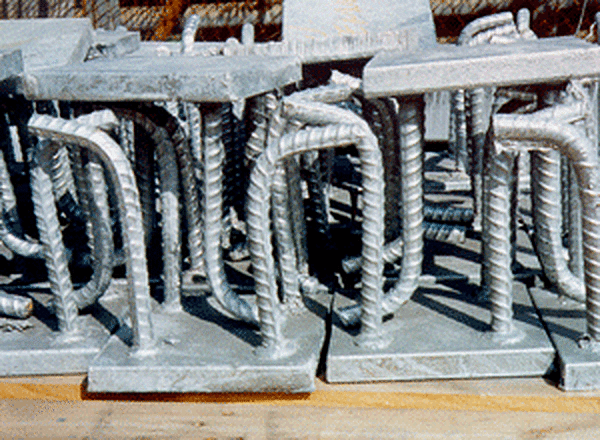Modified Embrittlement Test for Bent Rebars
Is there an embrittlement test suitable for bent rebars?

If there is no fear of or evidence for embrittlement, then embrittlement testing of rebars is not required under ASTM A123 and is often not necessary. If rebars of suitable material are bent according to the recommendations for minimum finished bend diameter in accordance with ASTM A767 (Table 2), these bars will not typically be at risk for embrittlement. However, if rebars are bent tighter than recommended or there are concerns regarding material properties, embrittlement testing may be appropriate.
In such cases where embrittlement may be of reasonable concern, ASTM A143, Practice for Safeguarding Against Embrittlement of Hot-Dip Galvanized Structural Steel Products and Procedure for Detecting Embrittlement, provides guidance for the embrittlement testing of hot-dip galvanized rebars. Since ASTM A143 is a guidance document, it does not provide detailed test procedures, but instead recommends a bend test be performed on a straight section of galvanized bar and compared with the results when bending a similar non-galvanized bar.
Although A143 does not explicitly outline a test for bars already bent prior to hot-dip galvanizing, the embrittlement testing information in A143 can still be applied. Instead, refer to the below description of a modified version of the comparison test. The spirit of the modified test is simply to spot a difference in the overall bend properties and determine if there has been a loss in ductility.
Modified embrittlement testing of bent rebars:
Bend 2 bars as required for the final fabrication. Galvanize one of the bars. Then, bend both the galvanized bar and the black bar even further (not unbent) even if to 180 degrees. The galvanized bar should not crack before the black bar. The same bend radius used during fabrication can be used, but is not required.
See also: Considerations For Bending Steel Reinforcing Bar Before and After HDG
© 2025 American Galvanizers Association. The material provided herein has been developed to provide accurate and authoritative information about after-fabrication hot-dip galvanized steel. This material provides general information only and is not intended as a substitute for competent professional examination and verification as to suitability and applicability. The information provided herein is not intended as a representation or warranty on the part of the AGA. Anyone making use of this information assumes all liability arising from such use.

